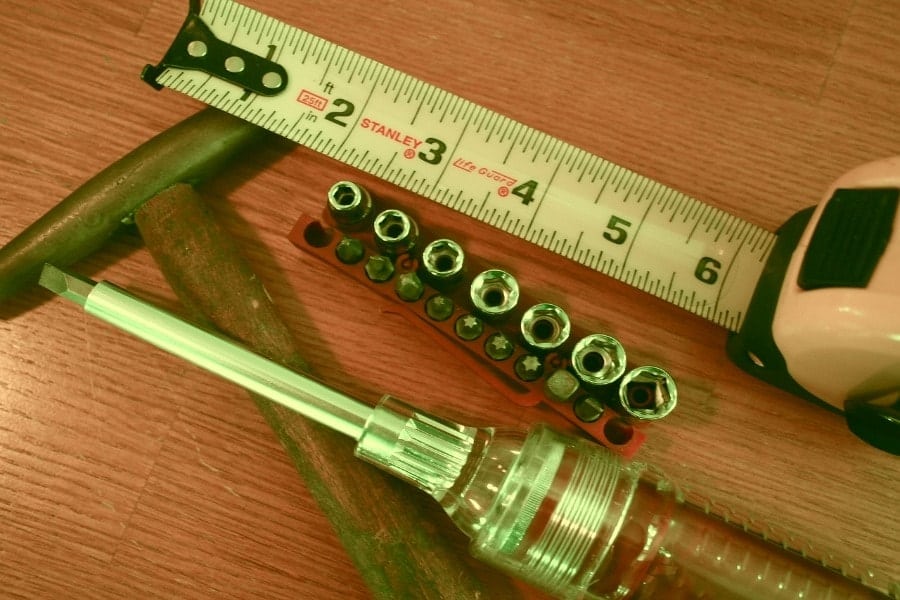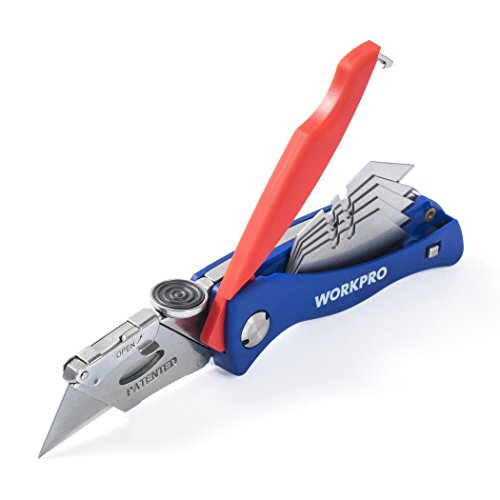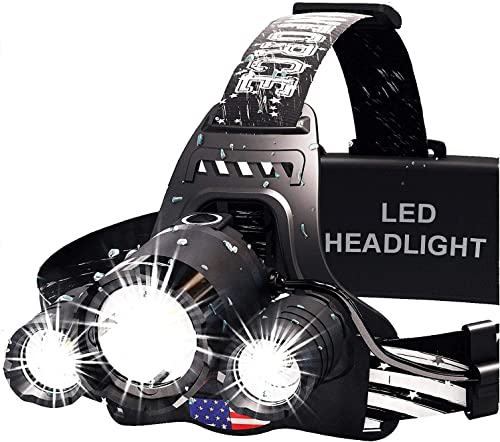Having your tool bag ready to go is an essential key to becoming an apartment maintenance technician. (Below) in the article, I’ve put together a helpful list with pictures of 18 essential tools for apartment maintenance and conveniently available online.
18 Essential Tools for Apartment Maintenance
1. What Are Channel-lock Pliers Used For?
Channellock pliers are a must-have; you can get the low-cost or costly variant. They are handy in a lot of different situations. For example, with these completely open, you can undo a P-trap under the sink. In addition, they work great when removing a supply line or simply holding a nut. These are incredible; they are something you would want to have in your tool bag.
2. What Can Shop Scissors Be Used For?
The shop scissors are excellent for cutting cardboard and other soft materials. For example, when unpacking new parts or new appliances, you can use them like a blade.
3. What Are Vise Grips Used For?
A vise grip fits a vast spectrum, for example, if you have a rounded object and can’t get an adjustable wrench or a channel lock on it. In addition, vise grips are ideal for removing rusty screws; anything and everything you know you might need to grip and hold on to, it is an excellent tool to use.
4. What Is a Utility knife Good For?
The utility knife is helpful for marking and cutting things. In addition, a utility knife is also handy for cutting caulking or things like that. A helpful utility knife will serve you well.
5. Why Is a Level Essential?
A small level does not break the bank; these are very low-cost. I recommend one with at least three bubbles; this will give you a 45-degree angle, then 90 degrees and zero degrees. A level with a magnet is also handy to use anywhere. For example, maybe you are hanging a picture, and you want everything to look square and level.
6. What Are Diagonal Cutters Used For?
A pair of diagonal cutters are great for just about anything you want to do since you know you’re cutting wires, cables, or maybe zip-tying up something like electrical wires. These diagonal cutters are also great for projects like hanging up Christmas lights.
7. Are Adjustable Wrenches Good?
An 8 or 6 inch variant of an adjustable wrench is a great start. Generally, adjustable wrenches are excellent for holding bolts. The adjustable wrench that I would put on the list is not expensive and are extremely useful in their way.
8. What Set of Ratchets Should You Buy?
For beginners, I recommend a small set of ratchets. A small collection of ratchets will serve you for many things, and I recommend you do metric because many things will be metric these days. These are great for tightening a balcony pole with a lag bolt. Using a small set of sockets like this, you’ll be able to manage the day.
9. Why Should You Buy a Fiberglass Hammer?
You will always need a hammer to hammer the anchors into the wall or hammer the nails in. In addition, a hammer is even useful when using things like the adjustable wrench for a little more power to break something loose.
10. What Is The Purpose of a Pry Bar?
These things are incredible. They’re used for all kinds of things, whether you need to separate something like demolition and remove specific 2x4s from a wall, taking off the baseboard that got wet.
11. What Is The Ideal Tape Measure Size?
Measuring tapes come in different shapes and sizes; you can get a low-cost one literally. These are great for finding the middle of a wall when hanging pictures.
12. Why Should You Have a Sharpie?
Sharpies are helpful for marking things. Maybe you are hanging a frame and need to make a mark on the wall; it could be various things you would need a sharpie for. But I think it’s one of the most crucial things in your tool bag because otherwise, all the other things you’re doing won’t make sense if you can’t make the mark on the wall or during your project.
13. Why Is GFCI Tester Essential?
The GFCI tester is fantastic, you plug it into the outlet, and it will show you if the circuit is okay. For example, if the resident uses a hairdryer in the bathroom, the circuit most likely trips. This unique tool can help you find out which circuit or GFCI has broken and reset it. You can read more about the purpose of a GFCI here.
14. Which Cordless Drill Should You Get?
A drill can do anything and everything you need; yes, it will be a little uncomfortable to switch between drills and bits and things like that. Still, it will do almost everything you need. It will allow you to go ahead and do the job, whether it is drilling holes, drilling screws; even if you find yourself with a broken screw head, it will allow you to remove it.
15. Should You Buy a Drill Bit & Driver Set?
A drill bit and driver set combo will do the job, whether you are working on cabinets or doors. Depending on your budget, you can get a small collection or get a more significant set. You can read more about impact drill bits and which driver is best for you here.
16. Is Ratchet Screwdriver Any Good?
I like these screwdrivers because with a 12-in-1 ratcheting screwdriver, you have all the tips stored in the handle, and you can pull them up via the back; you can do a lot with this tool. I strongly recommend that you get a multi-bit screwdriver to work efficiently.
17. Why Should You Get a Stud Finder?
The Stud Finder is one of the best affordable, simple technologies you can have in your tool bag. These are the possible scenarios where you will need a stud finder, perhaps to mount a picture or television. Trying to cut the drywall without damaging it, not having a stud finder can always be a cove. Even worse, it can even cause internal damage to the building.
18. Why Is LED Rechargeable Headlamp Essential?
You’ll find yourself working in daylight, and still, you will start looking for your best headlamp to get a clear view of the work area you’re trying to work on. The most common scenarios in which you are most likely to need a headlamp is when:
- Working under the sink.
- Responding to emergencies during the night.
- Entering the building’s attic to check for rain leaks, to name a few.
Related
- Read the full article about how long does it take to turnover an apartment.
- Also, you can learn more about what air compressors are made in the USA.
- And, you can also read this helpful article about what pressure washers are made in the USA.
- How to deodorize your garbage disposal



















